Abstract
Purpose
The purpose of this study was to evaluate the 3 dimensional accuracy of impression taking on the newly developed healing abutment and impression coping combined system comparing conventional pick-up type impression.
Materials and methods
For 10 patients who had a single missing tooth on molar area, dental implants (SuperLine; Dentium, Seoul, Korea) were placed and healing abutment (MyHealing; Raphabio Co., Seoul, Korea) abutments were connected. After 3 months, transfer type impression with MyHealing and pick-up type impression with impression coping were performed twice in the same patients, and master models were fabricated. Customized prosthetic abutments (Myplant; Raphabio Co., Seoul, Korea) were milled and connected to the master casts. Through a dental scanner (Scanner S600; Zirkonzahn, South Tyrol, Italy), the master casts were converted into virtual casts. The length and angulation differences between casts were measured using 3 dimentional analysis program (Geomagic Qualify 12; Geomagic, Morrisville, NC, USA). Statistical significance was calculated using Kruskal Wallis test and Mann-Whitney U test (α =.05).
Go to : 
REFERENCES
1. Rangert B, Jemt T, Jö rneus L. Forces and moments on Brå nemark implants. Int J Oral Maxillofac Implants. 1989; 4:241–7.
2. Misch CE. Contemporary implant dentistry. 3rd ed.; Mosby. Elsevier;Canada. 2009. p. 68–84.
4. Sellers GC. Direct assembly framework for osseointegrated implant prosthesis. J Prosthet Dent. 1989; 62:662–8.

5. Henry PJ. An alternative method for the production of accurate casts and occlusal records in osseointegrated implant rehabilitation. J Prosthet Dent. 1987; 58:694–7.

7. Carr AB. Comparison of impression techniques for a five-implant mandibular model. Int J Oral Maxillofac Implants. 1991; 6:448–55.
8. Humphries RM, Yaman P, Bloem TJ. The accuracy of implant master casts constructed from transfer impressions. Int J Oral Maxillofac Implants. 1990; 5:331–6.
9. Phillips KM, Nicholls JI, Ma T, Rubenstein J. The accuracy of three implant impression techniques: A three-dimensional analysis. Int J Oral Maxillofac Implants. 1994; 9:533–40.
10. Rodney J, Johansen R, Harris W. Dimensional accuracy of two implant impression copings. J Dent Res. 1991; 70:385.
11. Cabral LM, Guedes CG. Comparative analysis of 4 impression techniques for implants. Implant Dent. 2007; 16:187–94.

12. Daoudi MF, Setchell DJ, Searson LJ. An evaluation of three implant level impression techniques for single tooth implant. Eur J Prosthodont Restor Dent. 2004; 12:9–14.
13. Carr AB. Comparison of impression techniques for a two-implant 15-degree divergent model. Int J Oral Maxillofac Implants. 1992; 7:468–75.
14. Liou AD, Nicholls JI, Yuodelis RA, Brudvik JS. Accuracy of re-placing three tapered transfer impression copings in two elastomeric impression materials. Int J Prosthodont. 1993; 6:377–83.
15. Barrett MG, de Rijk WG, Burgess JO. The accuracy of six impression techniques for osseointegrated implants. J Prosthodont. 1993; 2:75–82.

16. Assuncao WG, Filho HG, Zaniquelli O. Evaluation of transfer impressions for osseointegrated implants at various angulations. Implant Dent. 2004; 13:358–66.

17. Del'Acqua MA, Arioli-Filho JN, Compagnoni MA, Mollo Fde A Jr. Accuracy of impression and pouring techniques for an implant-supported prosthesis. Int J Oral Maxillofac Implants. 2008; 23:226–36.
18. Carr AB. Comparison of impression techniques for a five-implant mandibular model. Int J Oral Maxillofac Implants. 1991; 6:448–55.
Go to : 
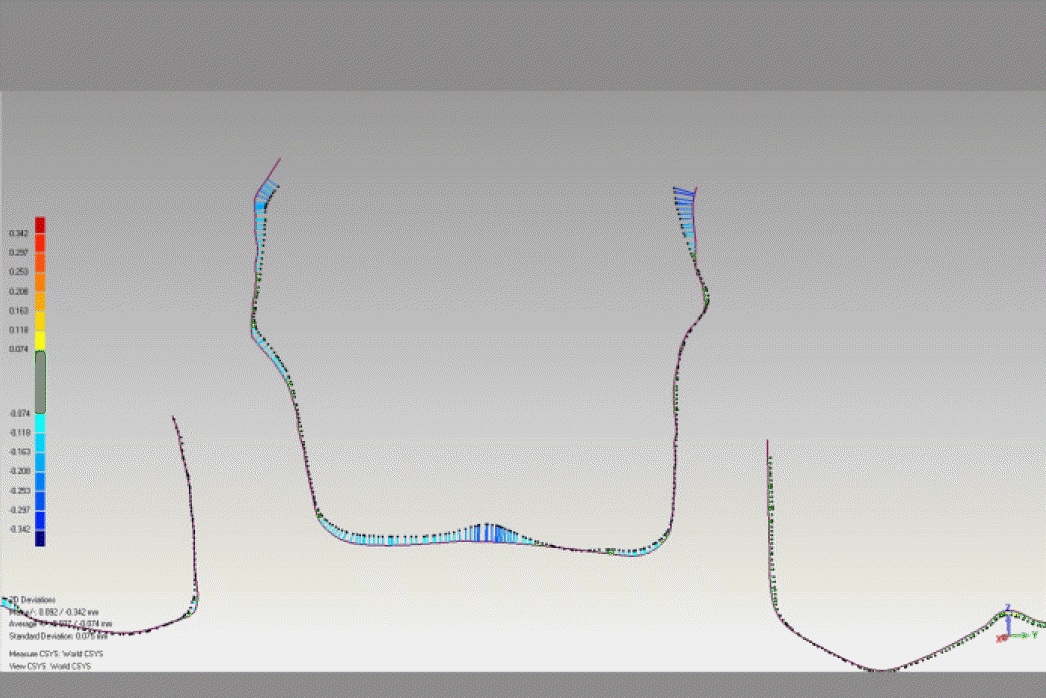 | Fig. 6.Analysis of difference between the two virtual models (impression healing abutment used / impression coping used). |




 PDF
PDF ePub
ePub Citation
Citation Print
Print



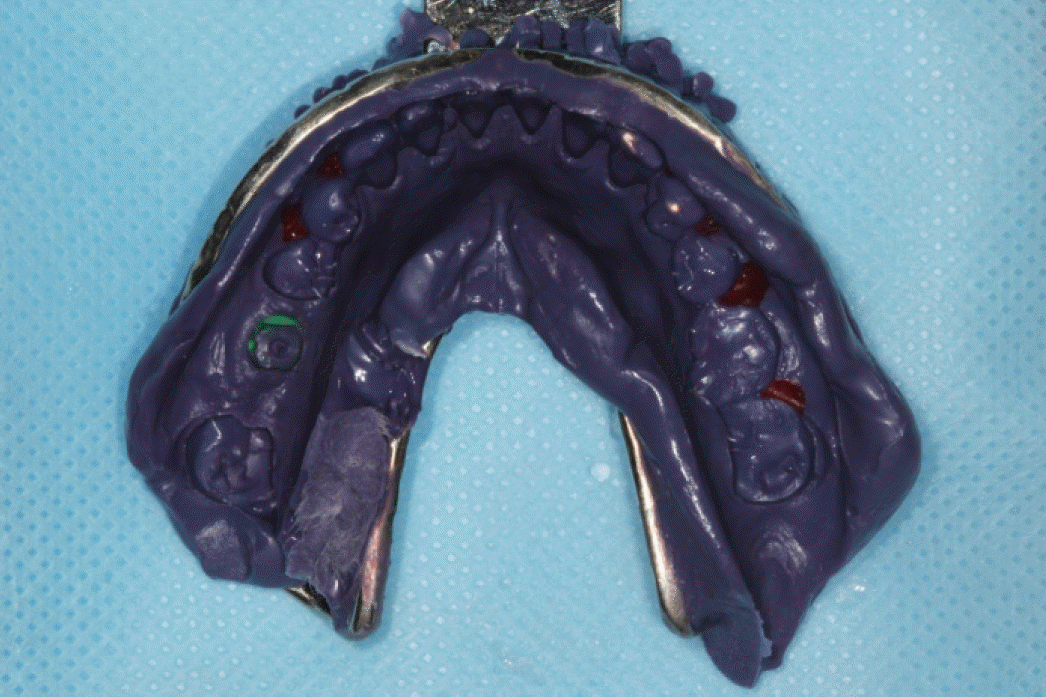

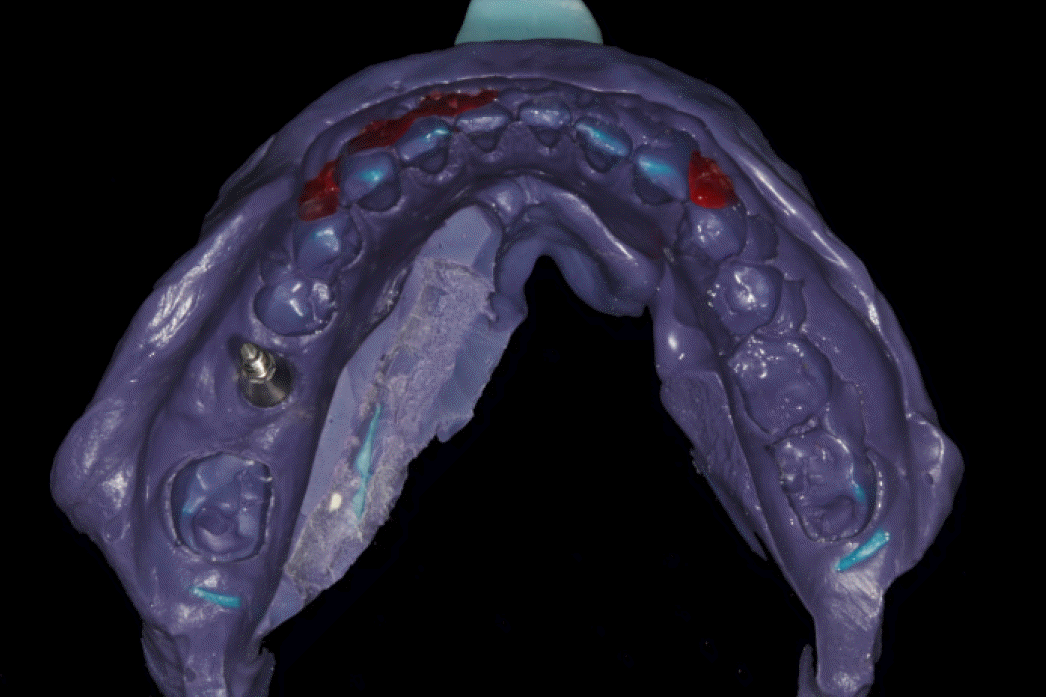
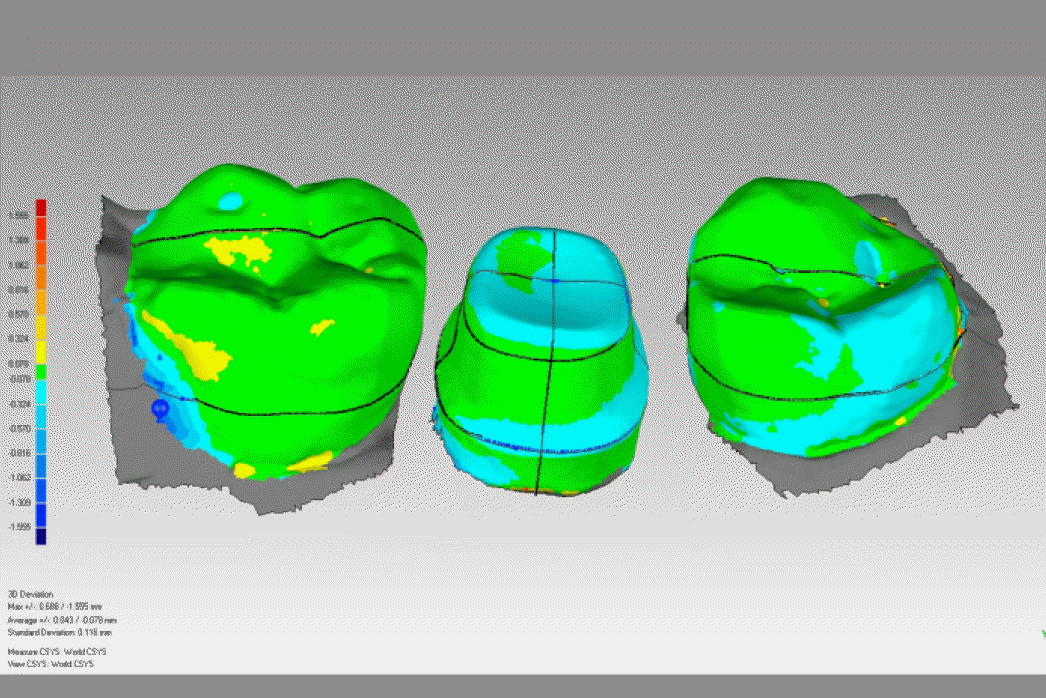
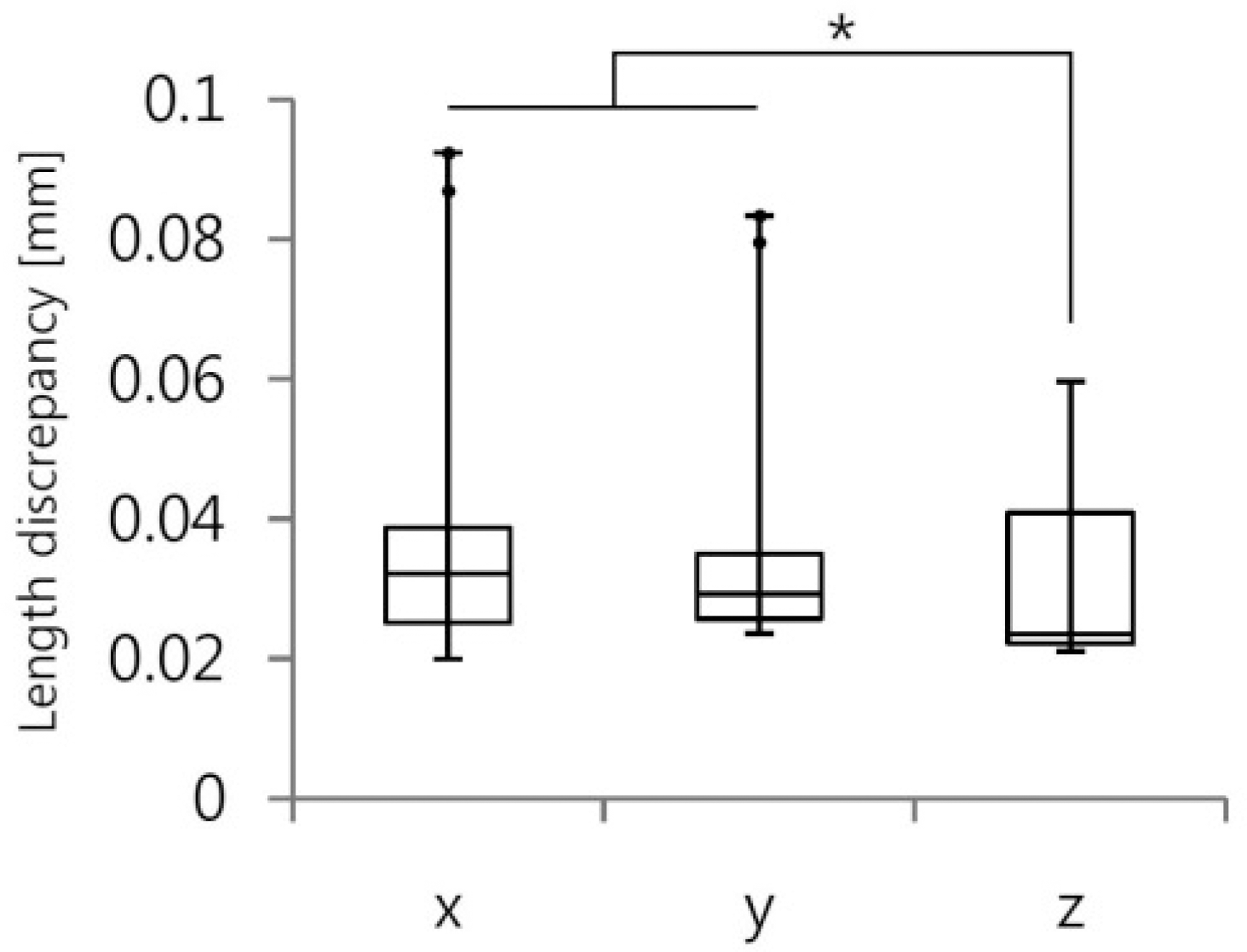
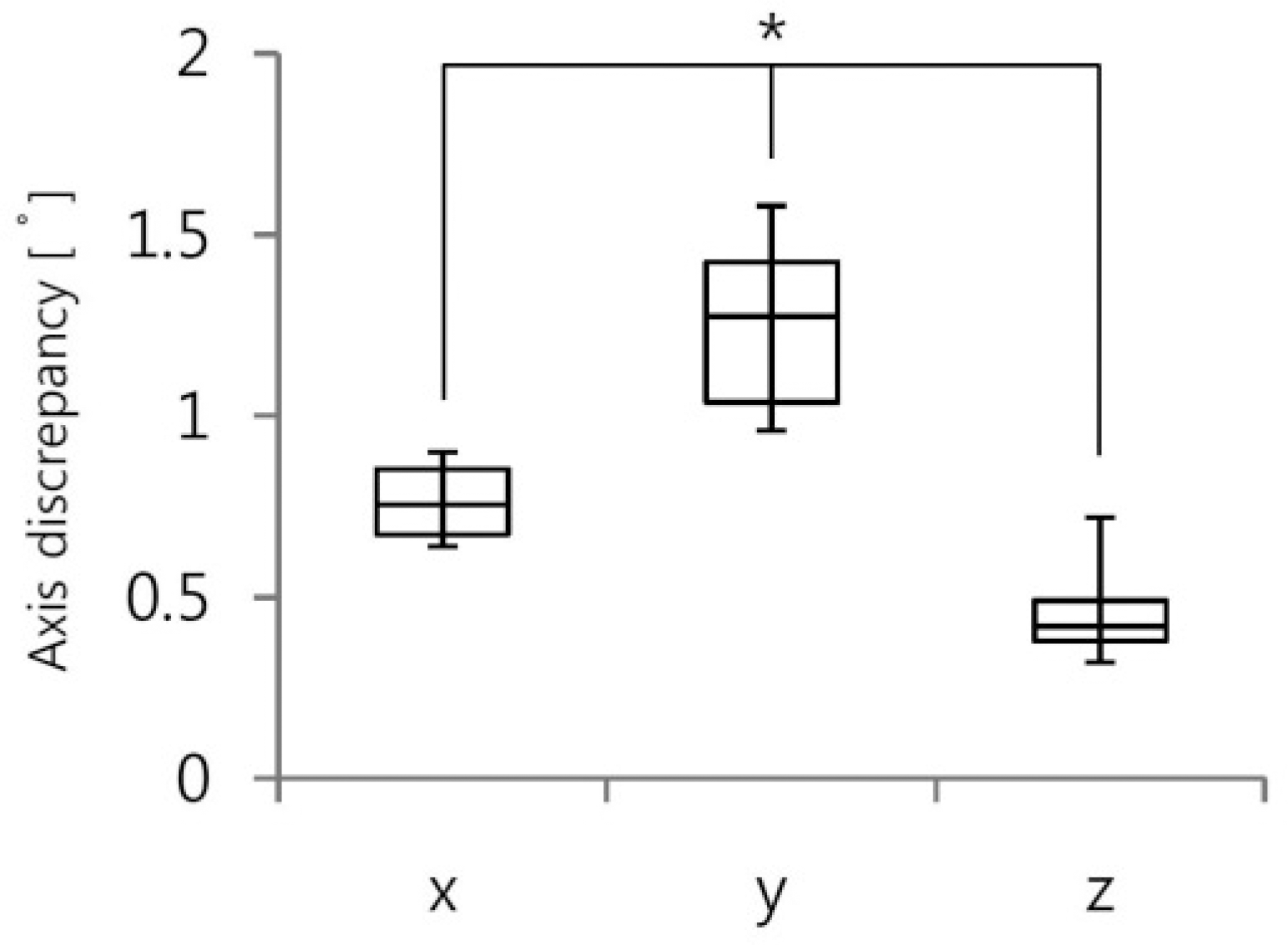
 XML Download
XML Download